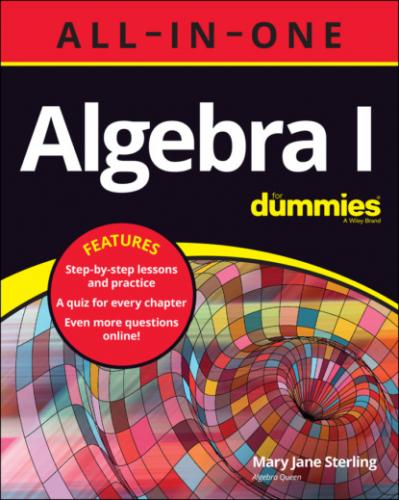A. Line up the decimal points in the first two numbers and add. Put in zeros to help you line up the digits. Then subtract the last number from the result.
Q.
A. Multiply the first two numbers together, creating an answer with four decimal places to the right of the decimal point. Then divide the result by 0.6, after moving the decimal point one place to the right in both divisor and dividend.
42
43
Changing Fractions to Decimals and Vice Versa
Decimals are nothing more than glorified fractions. Decimals are special because, when written as fractions, their denominators are always powers of 10 — for example, 10, 100, 1,000, and so on. Because decimals are such special fractions, you don’t even have to bother with the denominator part. Just write the numerator and use a decimal point to indicate that it’s really a fraction with a denominator that’s a power of 10.
The number of digits (decimal places) to the right of the decimal point in a number tells you the number of zeros in the power of 10 that is written in the denominator of the corresponding fraction.
Here are some examples of changing decimals to fractions:
A.
Q. Change 60.00009 to a fraction.
A.
Decimal fractions are great because you can add, subtract, multiply, and divide them so easily. The ease in computation (and typing) is why changing a fraction to a decimal is often desirable.
Making fractions become decimals
All fractions can be changed to decimals. In Chapter 1, you are told that rational numbers have decimals that can be written exactly as fractions. The decimal forms of rational numbers either end (terminate) or repeat in a pattern.
To change a fraction to a decimal, just divide the top by the bottom.
A.
Q. Write
A.
If the division doesn’t come out evenly, you can either show the repeating digits or stop after a certain number of decimal places and round off. Another way to show repeating digits is to draw a bar over the digits that repeat. So
Rounding decimals
To round a number means to create an approximate value. If you’re measuring the distance from one side of the street to the other and have a measurement of 37 feet,
To round decimal numbers:
1 Determine the number of places you want and look one further to the right.
2 Increase the last place you want by one number if the one further is 5 or bigger.
3 Leave the last place you want as it is, if the one further is less than 5.
The symbol ≈ means approximately equal or about equal. This symbol is useful when you’re rounding a number.
Here are some examples of rounding each decimal to the nearer thousandth (three decimal places):
A. 0.364. When rounded to three decimal places, you look at the fourth digit (one further). The fourth digit is 6, which is greater than 5, so you increase the third digit by 1, making the 3 a 4.
Q. Round 0.03125 to the nearest thousandth.
A. 0.031. When rounded to three decimal places, you look at the fourth digit. The fourth digit is 2, which is smaller than 5, so you leave the third digit as it
